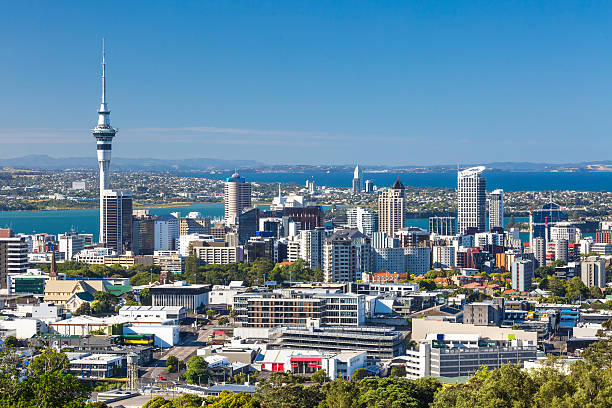Iran Travel Guide: All you need to know to visit Iran in 2025
Welcome to Iran
Welcome to Iran
Iran is a unique and historic country in Western Asia. You will observe as a visitor how kind Iranians are to visitors from other countries. Despite this, several nations warn against traveling to Iran because of the ongoing civil upheaval. If you must visit Iran, use our comprehensive travel guide to assist you in making travel arrangements.
Document checklist for Iran
Visa
Valid passport (for three months beyond the length of stay)
Sufficient funds
Return airline ticket
Essential Iran travel information
Currency – Iran’s national currency is called the rial (IRR). IRR 42,300 is roughly the value of $1.
Daily budget for one person – Allocate a daily budget of around IRR 1,956,608, or $46, daily.
Languages: Persian, Kurdish, and Azeri are the three main languages used in Iran.
Socket type: Type C and F, 220 V, and 50 Hz are the voltage and frequency.
Time zone – (GMT+3:30), Iran Standard Time.
Top 3 major cities to visit – Isfahan, Shiraz, and Tehran.
Top 3 landmarks/monuments – Naqsh-e Jahan Square, the Nasir al-Mulk Mosque, and Persepolis.
Visa information for Iran
Most individuals require a visa to enter Iran; however, some can obtain one upon arrival at an authorized airport. In addition, you may use Visabud to apply for an Iran eVisa online to visit the Islamic Republic of Iran briefly.
Typical costs and budget for Iran
Daily spending per person – For your trip to Iran, you should budget roughly IRR 1,956,608, or about $46 daily.
Meals – Allocate IRR 274,883 ($6.50) for one day’s meals.
Transport – You will spend around IRR 64,642 ($1.53) daily on local transportation.
Hotel – IRR 1,482,250 ($35) is the approximate cost of a hotel in Iran.
The average cost of a one-week trip to Iran for two persons is IRR 27,392,519 ($648).
Transport and ways to travel around Iran
Taxis are a frequent and inexpensive mode of transportation in Iran, particularly in smaller cities. However, pick a different form of transportation because Tehran’s traffic might be a problem.
In Iran, taxi prices might vary. Unfortunately, you risk overpaying as a guest without even realizing it. Cab drivers frequently speak English, but negotiating the fare in advance will be simpler if you know a little Persian.
Due to Iran’s rejection of international credit cards, renting an automobile might take a lot of work. Therefore, a global driving license is always required.
Train travel throughout the nation is a time-consuming but cost-effective option. As a result, Iran has rapidly built its rail network since the first line was built there in the 1930s.
The chance to take in Iran’s natural splendor is also fantastic. Longer trains include sleeping accommodations and carts with food and drinks frequently pass by. The ticket even comes with a food pack on longer trains.
Urban regions and nearby villages are frequently connected by minibusses. Although a minibus may cost more than a standard bus, it is easier to operate and move faster because fewer passengers and stops exist.
Safety in Iran
Travel to Iran at this time should be avoided owing to the unpredictable security situation, the potential of terrorism in the area, and the possibility of arbitrary detentions. But here’s how you can stay safe if circumstances change for the better and you have the chance to travel:
- Don’t use illicit substances, and obey all local regulations.
- To keep up with any developments on safety, keep an eye on the local media.
- Photographing military or governmental sites, significant civil infrastructure, or public demonstrations is prohibited by Iranian law.
- Dual citizenship is not accepted in Iran. If you get into problems, it could be challenging to secure consular help if you have dual citizenship or are a foreigner.
- Avoid purposefully taking part in any civic protest or rally.
- To prevent arbitrary detention by local authorities, avoid huge groups, especially if political upheaval looks to be building.
- Avoid talking about politics to avoid upsetting local sensibilities, especially if you are not Iranian in ethnicity or faith.
- You are far less likely to encounter protests if you stick in touristy areas, but if you go off the beaten track in Tehran, you could. Avoid Enghelab Plaza, one of the main gathering places for protesters.
- Avoid trying to use your bank account or PayPal in Iran, as these services are prohibited, and doing so can make your bank suspicious.
Weather in Iran
Iran is best visited in March through May and September through October. This protects you from the oppressive summer heat and the icy winter snow. However, prices might rise during the busiest time of year, particularly around April. For those prepared for the heat, June and October offer better deals. The two hottest months in Iran are July and August, with a dry heat index of around 30°C.
Must do and see in Iran
Hormuz Island is a magnificent island built entirely of salt. Hormuz Island has a completely distinct atmosphere compared to the rest of Iran. Most visitors come to camp and party; life is relaxed and tranquil. All of Iran’s strict regulations on the stunning island seem far away.
While traveling, stop by a traditional bazaar; it’s an excellent opportunity to learn about the area’s culture. Some bigger towns have souvenir shops, but most are neighborhood booths selling anything from clothing to spices.
See the traditional mud structures in Kharanaq. In some regions of Iran, natural mud cement, dome-shaped roofs, and wind towers are often used to construct homes. The views from a rooftop will make you feel like you are in a Star Wars movie.
Typical Iranian food to try
Khoresht-e fesenjan: this famous stew, called khoresht-e fesenjan, is enjoyed across Iran. Traditional preparations of khoresht-e fesenjan include duck, although it can also be made using chicken, lamb, or fish. Although khoresht is easy to make, it must be simmered to meld the sauce’s flavors.
Ghermeh: Large portions of lamb or beef are used in the beautiful Persian stew known as ghermeh. “Gheimeh” (cutting the meat into little pieces) is the practice.
Bademjan, also known as Khoresh Bademjan, is a delectable tomato and eggplant stew with lamb or beef and excellent tomatoes spiced with turmeric.
Vaccine information for Iran
Before making travel plans, it’s crucial to understand what standard vaccinations and COVID-19 precautions are needed to visit Iran. For additional information regarding all immunization requirements and any suggested guidelines or medication lists, it is essential to visit the CDC website.
Related Articles

5 min read
New Zealand Introduces Key Changes to Post Study Work Visa : What You Should Know
According to the government, this change will provide students with greater flexibility in their academic choices while ensuring they remain eligible to work. For many students, studying abroad is a
Read More
5 min read
The Singapore visa processing time for Indian citizens
Singapore is a small island located in the Malay Peninsula in Southeast Asia. It is one of the most economically developed countries in the world. Singapore is a fantastic place
Read More
5 min read
How Much Does an Australia Trip Cost from India?
If you are planning a trip from India to Australia, you must follow some of the points. that are : Planning Budget Traveling date and time To which place you
Read MoreYes, all Indian citizens with passports must travel to Iran. It is necessary to secure a visa from the Iranian Embassy in India. All Indian travelers entering Iran must have a valid visa, passport, or other travel authorization form, onward tickets, and enough money to cover their expenses. The kind of visa you need to enter Iran may vary depending on your nationality, the reason for your trip, and how long you intend to stay.
Beginning your online Iranian visa application at least two months before your scheduled visit to Iran is recommended. India is one of the countries that offers visas on arrival to certain nationalities.
Single entry is usually permitted.
The type of entry that is allowed must be carefully considered. For example, the bearer of a visa with a single-entry restriction can only enter and exit Iran once. In contrast, a visa with multiple entry restrictions may do so several times.
The actual passport will be stamped with the visa by the embassy. The passport must thus include two blank pages. Additionally, the validity of your passport should extend at least six months beyond the desired stay.
